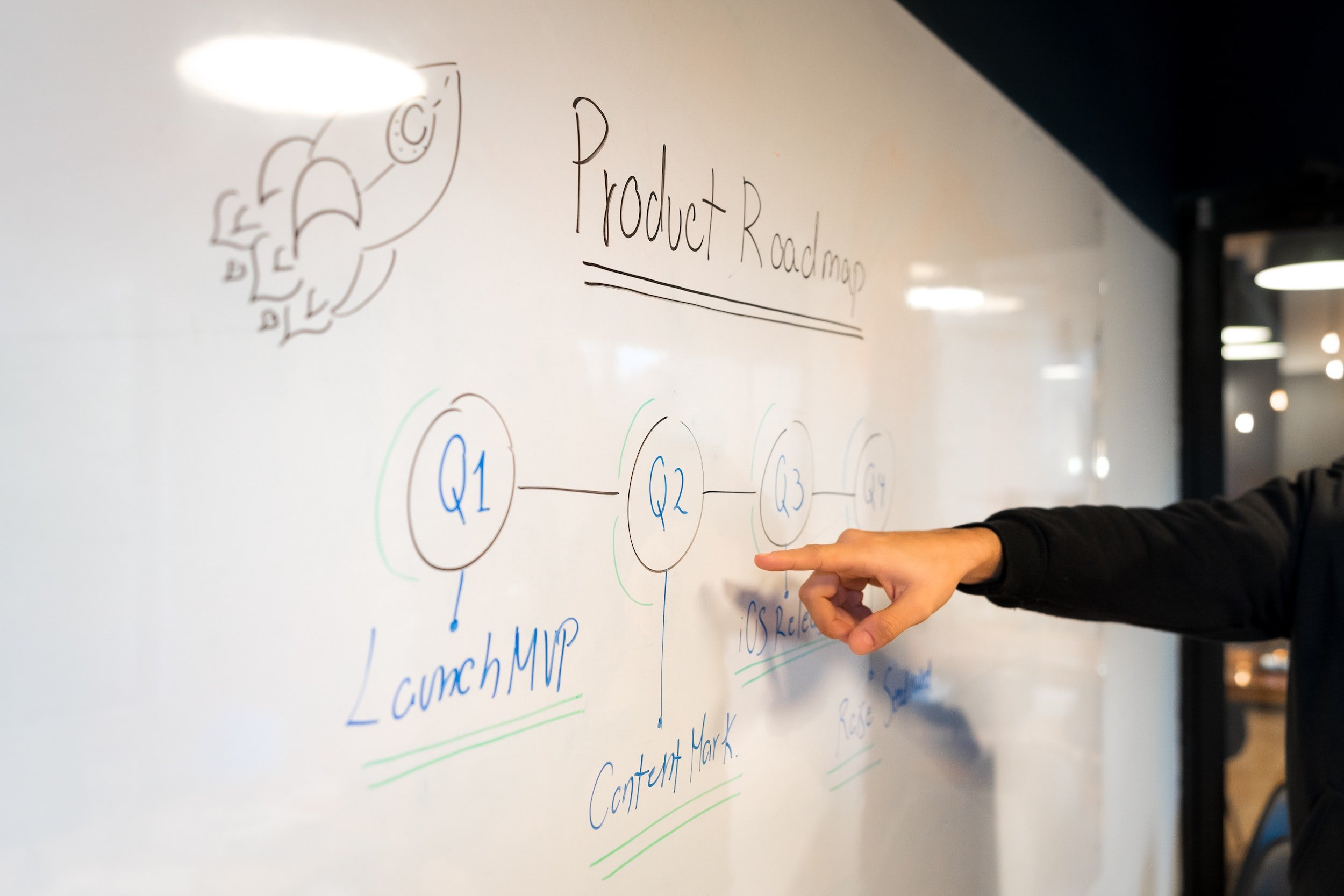Dude, Where's My Roadmap?
Every Product Owner thinks their team and situations are unique - whether it’s a distributed team, multiple products, or team dynamics, we all feel our circumstances have challenges no other team has faced. The truth is we all have opportunities to learn new ways to solve old problems. Luckily, when we get the chance to share these experiences, we realize we are not alone. After presenting my solution for my “unique” situation, it was requested that I share with a broader audience.
The Importance of Vision Statements
Definition of a Vision Statement is a future based look at where the team should be heading. It should cover: what the product is, what it will do, and how it will be accomplished.
Be Extra With Remote Teams
I have enjoyed working successfully and extensively with remote teams for years now. There are many challenges to overcome, and this article does not address the logistical issues; rather it focuses on the team building factors that are the core of success. Much of this is good for all teams everywhere, but it is essential to do this on an extra level with remote teams.
Safety First! Use the Power of Psychological Safety to Build Winning Teams
Psychological safety has become the center of many conversations around the world. But is it a fad, or just another buzzword? Firsthand, I emphatically believe that it is the core of building a successful team. I’ve worked with groups that were struggling, silent, not sharing ideas, following orders, miserable, with a huge turnover rate, terrible quality of deliverables, and working overtime on projects that were deemed as failing. With a lot of love, respect, and caring about the team and the humans that the team is made of, I have watched them grow and form into powerful entities full of innovative thoughts and successful sprints. Working less, they produced more than they ever had before and became leading teams in their space.
Don’t Skip the Retro!
The Sprint Retrospective, or “Retro,” is a Scrum Event that occurs at the end of every Sprint. During this Event, the Scrum team talks about the previous sprint – what went well and what can be improved – and then adapts their team processes, based on what is uncovered in that discussion. It is this consistent cycle of inspection and adaptation that creates a high-performing team. Unfortunately, this is the one Scrum Event that many teams (or worse, leadership) want to skip. However, I am begging you: Please. Do. Not. Skip. The. Retro. Seriously. Don’t do it!
5 Tips to Improve Your Own Emo EQ as a Product Owner
A Product Owner is constantly balancing expectations from the business, the team, and users. It’s a tough job. You might feel you are doing all the right things, but your team is just not responding. If you feel you are not getting the best results from your team, or perhaps you sense they just don’t like working with you, you might benefit from improving your emotional EQ.
Providing Valuable Performance Feedback
As knowledge workers we are trained to perform our job roles mainly through academic learning. While this is essential for us to perform our tasks, there is typically no training for supervisors or managers in providing feedback to their team members. Often, performance reviews are treated as something that is required to be done by corporate rules and as such relegated to annual or bi-annual events.
What is it like for you to receive feedback once a year? What is your experience getting feedback from managers? In this blog I will share some tips that will enable you to provide feedback in a meaningful way throughout the year, not just during an official review period. This is even more critical in the VUCA world we live in now.
User Stories, Fables, Tales, and Chronicles
This article covers some basic concepts but there are specific techniques you will need, such as story elaboration, hierarchies, targeting personas, story splitting, impact mapping, etc. We offer advanced story writing workshops that meet your needs.
Contact us to learn more and deliver products that will wow your users! We provide training, workshops, and consulting to get your product game to the top of the league!
Dependency Management – the Good, the Bad, the Ugly
Dependencies are an epidemic in software development. And the reality is, dependencies are not going to go away. As you scale your Agile efforts, your dependencies scale as well. Therefore, instead of just managing them, the solution to ruthlessly mitigating dependencies lies in empowering people and enabling flow.
Got ugly dependencies? Read on to find out how to apply both the agile mindset and actionable items to progress from ugly to good dependency mitigation. We’ll explain actionable strategies you can use to move your teams from managing dependencies to mitigating dependencies.
Product Mindset - Webinar
A deep dive into 3 steps to Grow Your Product Mindset and creating products your customers love.
Identify the Problem “Discovery is the new knowing.”
Value is what your customer is willing to pay for “Stop thinking about your customers and start thinking like them.” ~Chris Spagnuolo
Validate the Outcome “We don’t know what’s possible with technology—none of us really know until we actually see it." ~Marty Cagan
Regression Test Yourself
In this post, Tricia Barnes shares her personal journey to an advanced Product Owner role. Using the analogy of regression testing, she encourages us to take time to learn new things and grow, but also, be OK with pushing the pause button. Go back to the basics, and spend time integrating the new with old. In time, you will see what you are building is far stronger than anticipated.
3 Tips & 8 Seconds to Change the Emotional Climate of your Team
Scrum Masters, are you a natural Servant Leader, or do you struggle to be the inspiring coach that creates high-performing teams?
The following blog is inspired by the work of Scott Watson, an emotional intelligence speaker and trainer. I hope they will complement what you are already doing well and help you create a tactical plan to improve your own emotional intelligence and the emotional climate in your team. You might find that focusing on how your behavior is impacting others can change the emotional climate in your team – and positively impact your career. (Want more from the Product Owner lens? See my Emotional EQ for Product Owner’s article.)
5 Tips to Improve Your Emotional EQ as a Product Owner
A Product Owner is constantly balancing expectations from the business, the team, and users. It’s a tough job. You might feel you are doing all the right things, but your team is just not responding. If you feel you are not getting the best results from your team, or perhaps you sense they just don’t like working with you, you might benefit from improving your emotional EQ.
3 Steps to Grow Your Product Mindset
Do you want to create products your customers love? It’s not just a marketing gimmick. Take these 3 steps to grow your Product Mindset and change the world.
The Product Mindset Manifest
These four elements of Product Management create a basis for a Product Mindset. Learn how the Growth Mindset, the Agile Mindset, and the Product Mindset intersect. Explore how you can go further, and what courageous questions you might not be asking.
Why Agile Transformations Fail
There's no shortage of reasons why agile transformations fail, but you can avoid many of the pitfalls by educating yourself on common issues and preparing your business for potential problems.
Good Agile Patterns
If your organization has decided to utilize an agile scaling technique it is important to understand both how to implement these changes and how to test the implementation.
Scrumalogies: Analogies for Scrum - Part Two
We gathered together some genius analogies to draw parallels between real life and the Scrum framework. This is a continuation of analogies from Part One.
Scrumalogies: Analogies for Scrum - Part One
Have you ever tried to explain how a Scrum concept works in a way that people can relate with? We find the easiest way to simply explain scrum is to use analogies that fit into everyone’s everyday knowledge.
What Is an Agile Organization?
What is an Agile organization exactly? What are some common characteristics of Agile organizations and how can your company develop those characteristics?




















